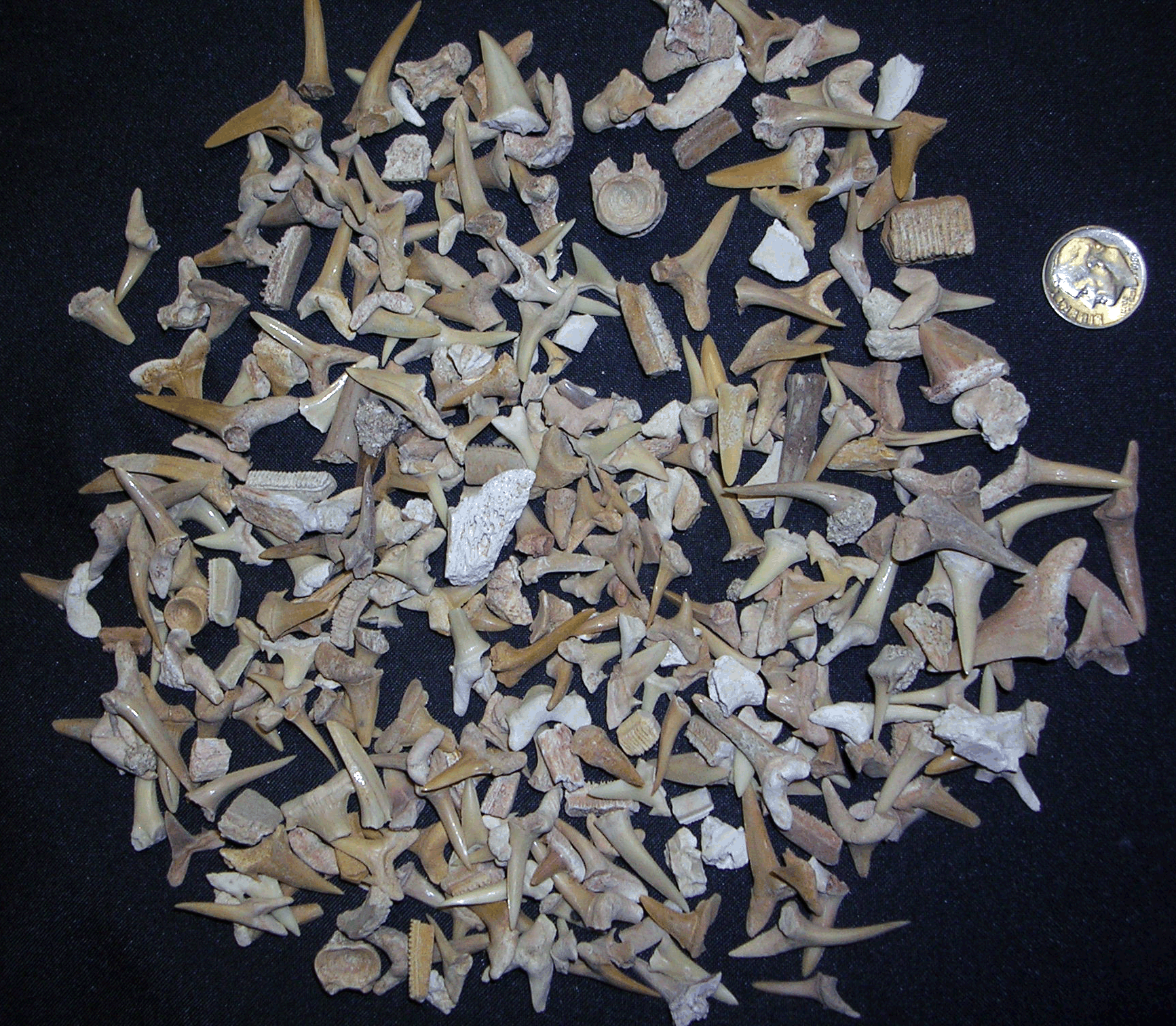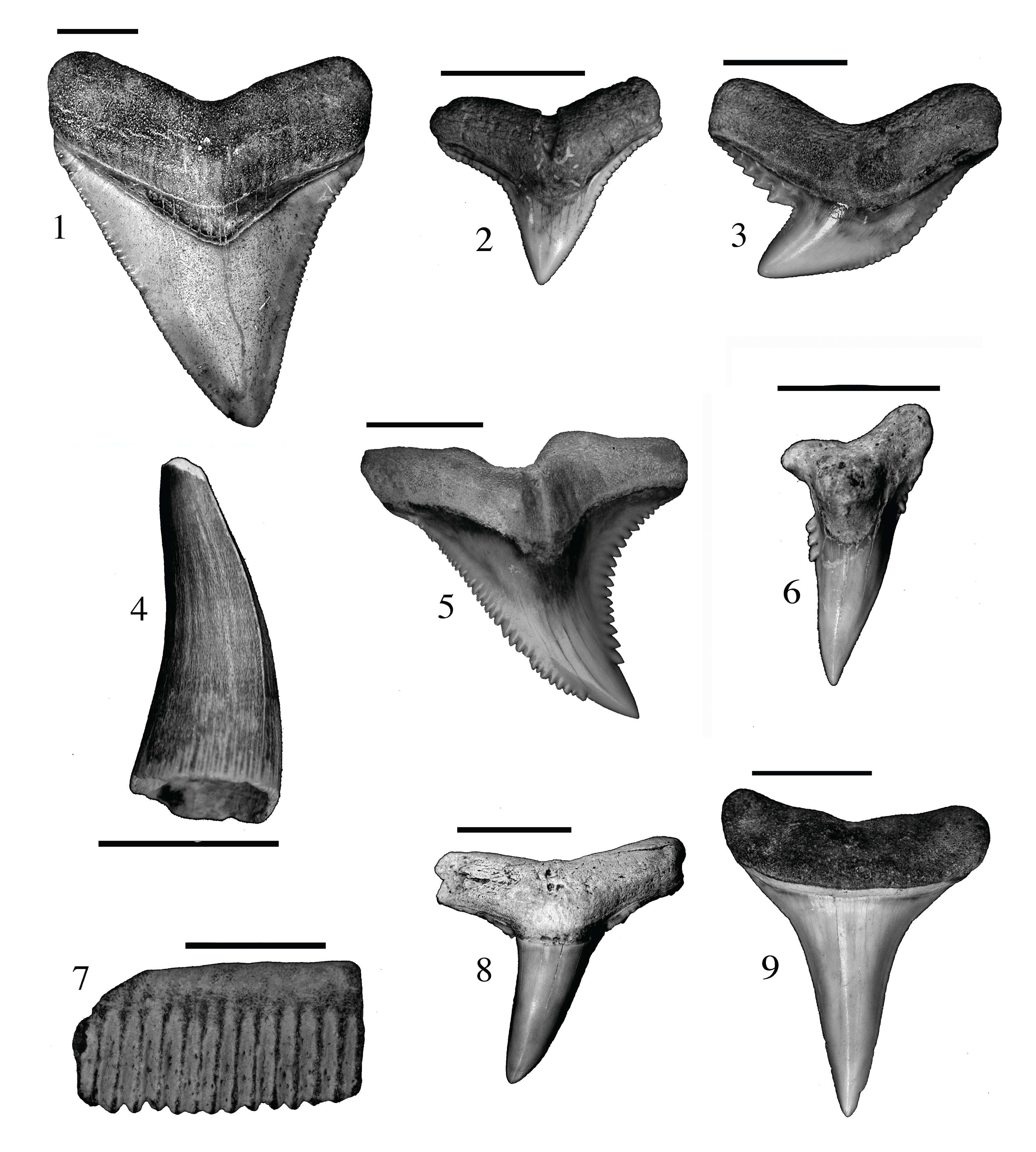|
- Divide students into groups of two or three and give each group a handful of Miocene shark teeth (Figure 6) and
a geologic timescale. Tell the students the age of the shark teeth and have them locate the Miocene on the geologic
timescale. The University of California Museum of Paleontology has a good description of the Miocene Epoch
(http://www.ucmp.berkeley.edu/tertiary/mio.html).
- Have your students separate the shark teeth into (what they believe are) different species. Go around to each
group and assist with their sorting. Then have the students use the reference materials to name their fossil species.
| 

